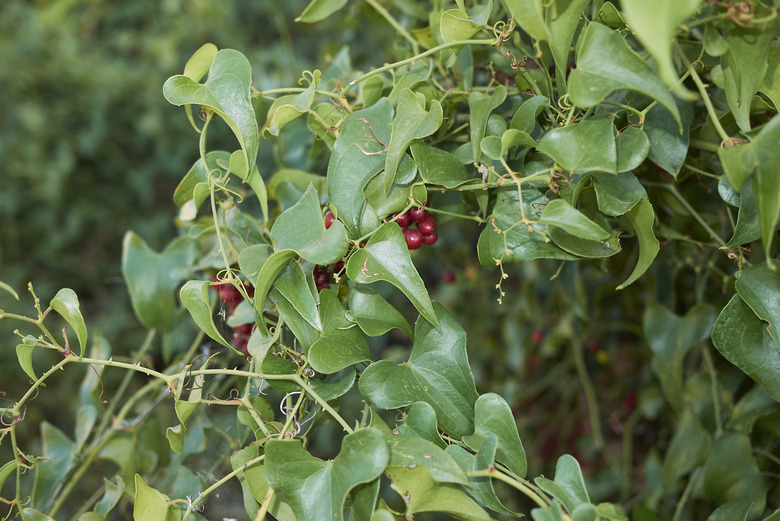How To Kill Greenbrier Vines
We may receive a commission on purchases made from links.
Brier vines (Smilax spp.) are also called greenbrier, deer thorn, catbrier, cat sawbrier, and sarsaparilla, as well as curse words not appropriate to publish. Hardy in U.S. Department of Agriculture plant hardiness zones 3 through 11, these tenacious, thorny vines sprout from thick underground roots that are extremely hard if not impossible to remove by hand. And even a little piece left behind will quickly produce a new plant.
A home gardener's best bet is to remove these vines when they are young. Otherwise, it's a question of cutting them back annually.
Meet the Greenbrier Vine
Meet the Greenbrier Vine
Plants in the Smilax genus are almost all climbing vines that seem to appear magically throughout the garden, armed with thorns and decidedly dangerous. One day there's one vine with waxy, heart-shaped leaves wending its way through the perennial flower beds. The next day, there are six plants.
But the real cause of this spread has to do with the fruit of the vine, small berries in red, blue, or black. Birds enjoy eating these berries and the undigested seeds are deposited here, there, and everywhere, and germinate readily. This is one of the toughest vines to control in the garden.
Understand the Tenacity of the Smilax
Understand the Tenacity of the Smilax
When a smilax seed germinates, the plant sends up one shoot and, at the same time, produces an underground bulb. As the greenbrier matures, a large cluster of bulbs is created in an extensive underground rhizome/tuber system. While shoots sprout from one part of the system, most of the bulbs lie dormant. If one bulb is killed, adjacent bulbs send up shoots within a few days.
If the vine is able to establish in the landscape, it builds an extensive, tough underground rhizome/tuber system. At this point, greenbrier vines are extremely difficult to remove. Since these plants tolerate low light conditions, they survive in the crown of a shrub or so deep in a forest that it takes several years for them to emerge from the plant canopy. By that time, the underground rhizome system is in place.
Best Tactics to Control Smilax
Best Tactics to Control Smilax
This is a vine that requires immediate and ongoing attention in the garden. Your best bet is to dig out the root while it is small. Tugging on it to pull it out is a bad idea since the tap roots run deep, and if so much as an inch remains, the plant will sprout again quickly. Use a shovel and dig it out as soon as you spot one. And look around for its friends since they rarely appear alone.
If you miss the very small window of opportunity to get rid of the early smilax plants, you'll probably have to be satisfied with cutting out the above-ground stems on an ongoing basis. In time, deprived of foliage and sunlight, the vine may weaken and die. Some chemicals can be effective, including herbicides with glyphosate or triclopyr as the active ingredient. The latter is probably a better choice since it will not harm most grass species and woody, ornamental species.
